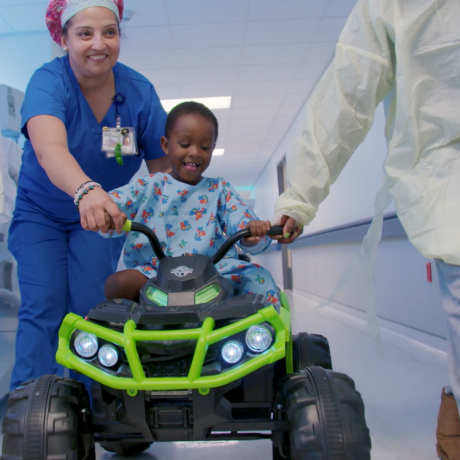When Mary Larson passed away, she made sure that others might live. She included a planned gift to benefit Connecticut Children’s, leaving the hospital more than $2 million to support groundbreaking research into childhood cancer.
Mary’s support for Connecticut Children’s wasn’t just financial, and her caring for children wasn’t only posthumous. For much of her life she served as a volunteer, starting back when the institution that became Connecticut Children’s was called the Newington Home for Crippled Children. Her last volunteering job at our Hartford location was with the Reach Out and Read program, reading to and being read to by children in the hospital.
Her own childhood was comfortable, and she had a career in the business world before marrying Everett Larson, a utilities executive. She always had compassion for those less fortunate, and she put that compassion into action. Now, with her final act, she has taken the boldest step yet, directing her legacy gift to support groundbreaking pediatric cancer research at Connecticut Children’s.
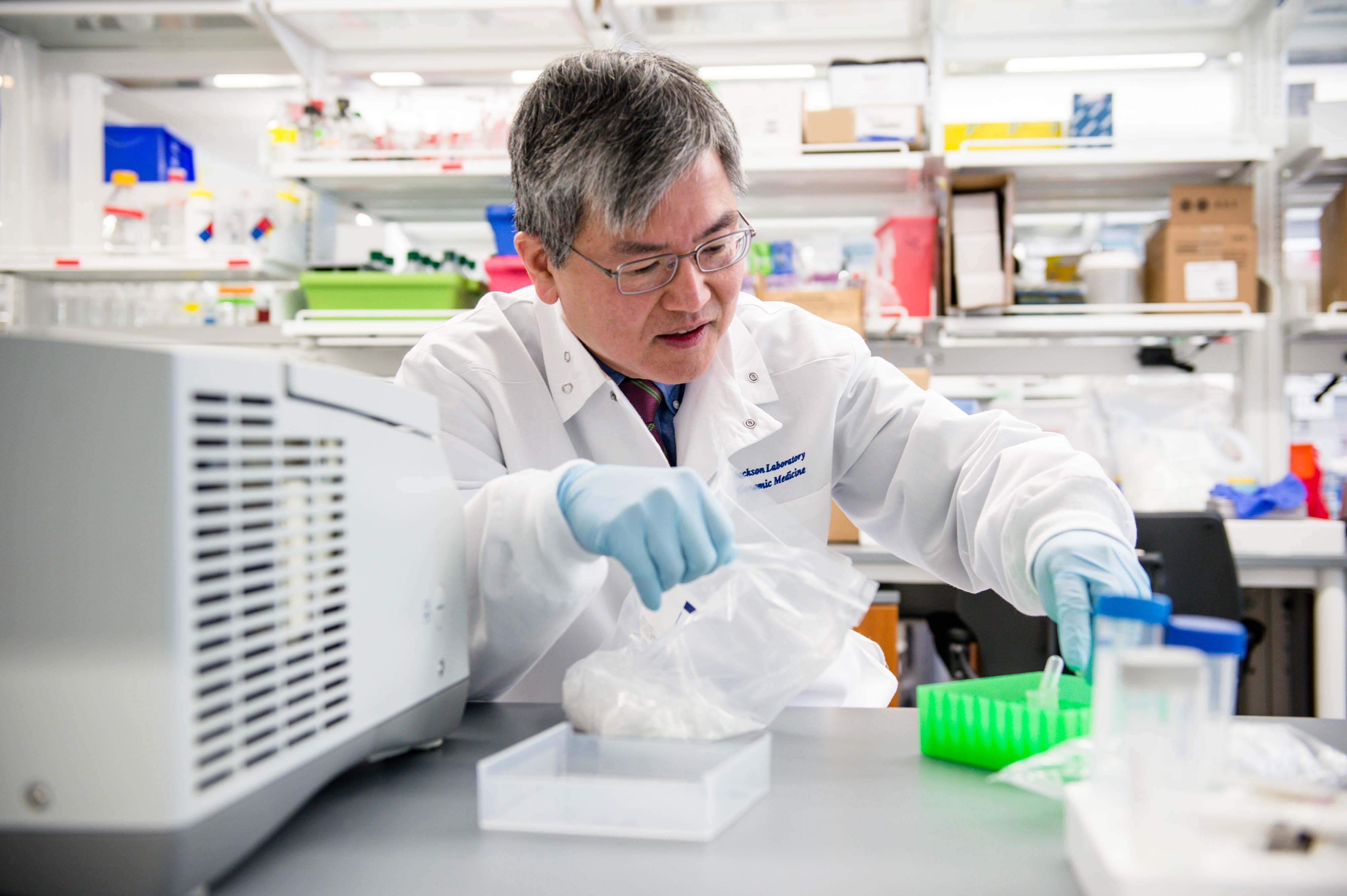
Finding New Treatments
That work couldn’t be more important. Though previous research has greatly improved the number of children surviving various forms of cancer, far too many do not survive. And the chemotherapeutic tools available are still closer to a blunt instrument than anyone would like. They can be effective against many cancers, but they often have to be broad in their toxicity because cancer itself is so diverse. Any given type of cancer can have many subtypes. And a particular subtype can interact in a unique way with each individual child.
Addressing those problems is the focus of research by Ching Lau, MD, PhD, Division Head of the Center for Cancer & Blood Disorders and the Martin J. Gavin Endowed Chair in Hematology/Oncology. Dr. Lau is hoping to zero in on the genetic makeup of various forms of cancer. He is working to identify drugs and molecules that will be effective against the target genes.
One of the ways he does this is using cutting-edge CRISPR technology, a tool for precisely editing genes. He uses it to prompt a mouse to develop a particular form of cancer. He can then study how that tumor grows from the first few cells. That’s important because we can’t typically see those early stages in children. Parents bring their children in for a diagnosis only when symptoms are significant, and by that point, the cancer has typically advanced. Studying the earliest stages of cancer development in mice helps Dr. Lau understand the tumor’s genetic structure and identify a target for new drugs to attack.
Finding those new drugs is challenging, though. There are millions of potential molecules that might work against a given tumor, and there are thousands of existing drugs for other conditions that might also have anti-cancer properties, and they all need to be examined.
To speed up that process, Dr. Lau is working with IBM’s Smash Childhood Cancer consortium, a crowd-sourced network of nearly 800,000 computers worldwide that can screen enormous numbers of drug candidates at once. The results can then be tested on mice, to see if they do, in fact, work.
Magic Mice
Testing drugs with mice is not as simple as you might think. While mice are genetically similar to humans, they are not identical. The reaction of a mouse tumor to a given drug might not be the same as a human.
So Dr. Lau is working with highly specialized mice that have been bred over generations to have a unique ability: their bodies won’t reject human tissue as foreign. In his critical research, Dr. Lau inserts tumor tissue from pediatric patients into these mice. The tumors grow, but continue to be actual human tissue. This way, when a drug is tested on that tumor, the result is likely more accurate.
Groundbreaking Cancer Research
Using all these techniques, Dr. Lau has made some important discoveries over the past few years. In one case, he was looking for a drug that might be effective against two of the subtypes of medulloblastoma. This is the most common form of malignant brain tumor in children. It is fatal for one in four patients. He started by looking at drugs that had already been approved for some other use and that might have characteristics that would make them effective in this application.
After screening more than 1,300 drugs, he came across digoxin, a drug derived from the foxglove plant that has long been used to treat heart problems. It appeared to have all the crucial properties for fighting this form of cancer, so Dr. Lau tested it on human tumors implanted in mice. And it worked.
Digoxin substantially increased survival rates in the mice. He is now working with Michael Isakoff, MD, Clinical Director of the Center for Cancer & Blood Disorders, who is designing a clinical trial. In this first of a series of trials, digoxin will be given to children with medulloblastoma. If those human trials are successful, doctors will have a new and effective treatment for this lethal form of cancer.
Finding a Killer Gene
Dr. Lau also had a breakthrough in treating intracranial germ-cell tumors. Germ cells are the ones in the fetus that are supposed to become reproductive organs. But in some children, these cells become malignant and develop into tumors in other parts of the body. In young teens, those tumors tend to form in the brain.
There are two kinds, one that can usually be treated successfully and one that is fatal in a majority of cases. Stopping this cancer requires finding the genetic cause for it. And that is precisely what Dr. Lau did, working with multiple collaborators, including many in Japan.
They began testing people in Japan, because this kind of cancer is most common there. They suspected there must be a gene that predisposes people to develop this disease. And in a surprisingly short time, Dr. Lau and his colleagues in fact found that gene. They are now doing a much larger international study, including germ-cell tumor patients of various ethnicities to see if that gene or other genes might be causing this type of tumor in different populations.
Dr. Lau’s most recent achievement is identifying a target for intracranial ependymoma, a particularly lethal type of brain tumor in children. It takes the lives of half the children who have it, and there is currently no drug treatment available.
Researchers have discovered that the tumor seems to stem from a fusion of two different proteins, but they could not tell which component of that fusion actually was the culprit. Without that knowledge, they could not even begin to test potential drugs. In 2020, Dr. Lau and his colleagues performed groundbreaking research that broke this log jam and identified the specific component that causes one subtype of ependymoma.
With that information, they can begin looking for a drug to fight it. Dr. Lau will be using the IBM network to screen 5 million drug candidates this year. From that screening, which should take months instead of years, he expects to identify about 50 compounds that appear to be effective. He will then go to the next phase, which is testing those compounds on mice. The drugs that prove effective in mice will then go on to the final, vital part of the process: clinical trials. And that’s an area where Connecticut Children’s punches far above its weight.
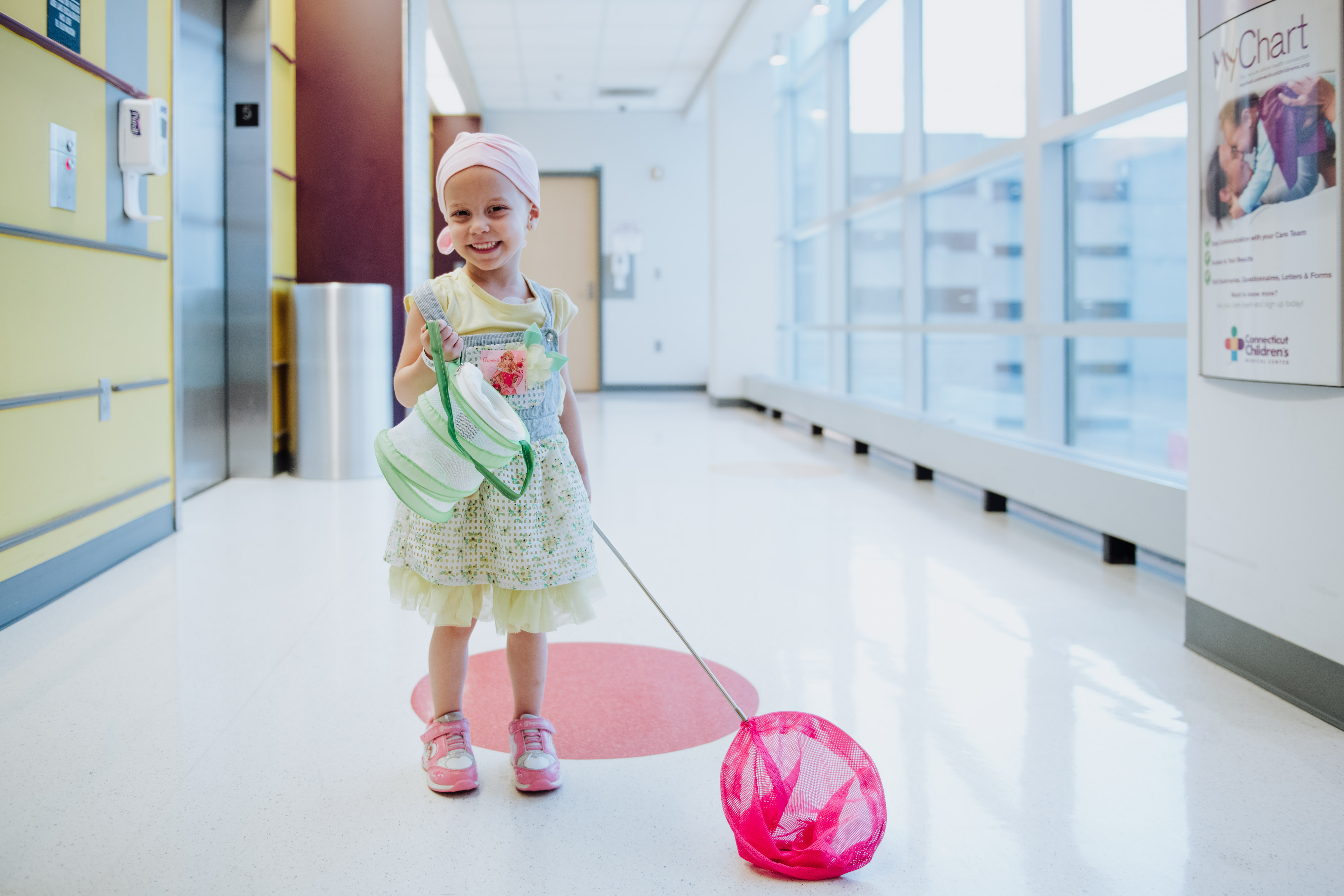
Testing, Testing
Designing and executing a clinical trial is a complex undertaking. Every detail of the child and the process has to be painstakingly tracked and controlled, to be sure the results are reliable. Of course, patient safety is the primary consideration.
Connecticut Children’s trials are overseen by Michael Isakoff, MD, the Clinical Director of the Center for Cancer & Blood Disorders. Thanks to his efforts, Connecticut Children’s typically has more than 100 clinical trials open at any given time, far more than most children’s hospitals our size. The volume of trials comes from Dr. Isakoff’s work to include Connecticut Children’s in several pediatric cancer consortia. That includes the Children’s Oncology Group, the Beat Childhood Cancer Consortium and the National Pediatric Cancer Foundation’s Sunshine Project, which is focused on finding treatments that are less toxic and more targeted. Dr. Isakoff serves as the Chair of the protocol committee for the Sunshine Project, helping to lead the development of new clinical trials.
Among the trials now being conducted at CT Children’s is an assessment of immune therapy to treat children and young adults with relapsed osteosarcoma, the most common bone tumor affecting young people. A second study is assessing the addition of a new targeted immune therapy called daratumumab for children who have a relapse of the T-cell subtype of leukemia.
These trials provide options for children who have a poor prognosis or who have exhausted all the existing therapies. The drugs on trial don’t always turn out to be as effective as hoped, but there are breakthroughs. For example, one trial involved a drug referred to by the initials DFMO. It was used for patients with advanced neuroblastoma, for whom there is a poor prognosis. With the addition of DFMO, survival rates for a subgroup of patients jumped from 70 to 80 percent.
Curing the Cure
Finding and testing effective drugs is obviously essential for beating cancer, but the work doesn’t stop there. In the process of destroying cancer cells, these powerful drugs can also cause severe and permanent side effects. These include hearing loss, decreased neurocognitive function, heart failure, infertility and secondary malignancies, to name a few. But not every child suffers from every potential complication. Each child reacts differently to cancer and to treatment. Right now there is no reliable method to predict which patient might suffer from such side effects.
But Dr. Lau and his team just launched a new program using special mouse colonies to identify genetic factors that might increase the risk of getting such side effects. Once these genetic factors are identified in mice, the plan is to test their effects in the long-term survivors of pediatric cancers. If this research is successful, doctors can then predict which patient will most likely suffer from side effects from which drug. Then they can adjust the treatment plan to minimize the long-term side effects while curing the patient of his/her cancer.
On every front, Connecticut Children’s cancer researchers are breaking new ground and finding new ways to help children survive these dread diseases. With Mary Larson’s legacy gift, that work can take even greater strides forward.
“Planned gifts like the one Mary Larson established are game changers,” said Rob Keane, Associate Vice President for Planned Giving. “Mary established a trust that provided for her sister, Jean’s, care, then passed to Connecticut Children’s to fund pediatric cancer research upon Jean’s passing. Mary’s kindness and generosity will live on for generations, because of the research her estate gift is making possible.”
Learn how you can include Connecticut Children’s in your estate planning and make a lasting difference in the lives of children.
Latest Articles
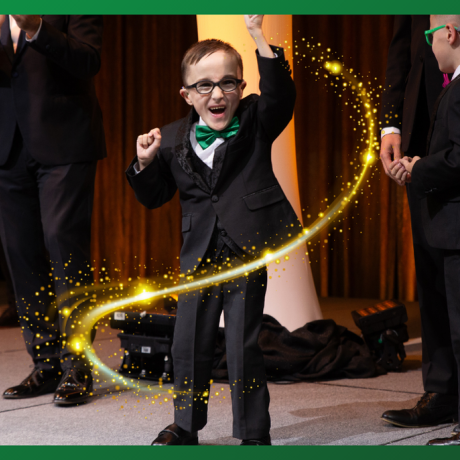
We Were Changed for Good
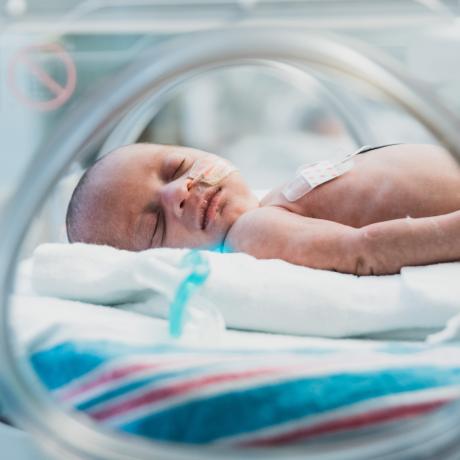
The Most Advanced Care for Our Tiniest Patients
